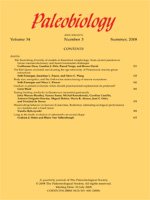The Dominican Republic amber, as a data set for ecological investigation, is subject to unique biases. To understand the paleoecology of Hispaniola during the Miocene it is not sufficient only to identify the amber inclusions, the biases of entrapment also need to be elucidated. This study compares the spider (Araneae) fauna from Recent Neotropical rainforests with assemblages from Dominican Republic amber deposits. This comparison demonstrates that the site of the original resin secretion is farther removed from the ground layer than has previously been suggested. In many spider families, particularly the web weavers, mature males lead an active lifestyle as they roam in search of the more sedentary females. Male spiders are significantly more common as amber inclusions than females. When the sex ratios of preserved spiders are examined in relation to the predation strategies of their extant relatives, at family level, wandering spiders appear more susceptible to entombment than sedentary spiders. This implies that spiders, and presumably other co-occurring organisms, were trapped primarily by wandering onto sticky resin rather than by being engulfed passively by less viscous, flowing resin.
How to translate text using browser tools
1 September 2002
Paleoecology of Dominican amber preservation: spider (Araneae) inclusions demonstrate a bias for active, trunk-dwelling faunas
David Penney
ACCESS THE FULL ARTICLE

Paleobiology
Vol. 28 • No. 3
September 2002
Vol. 28 • No. 3
September 2002




